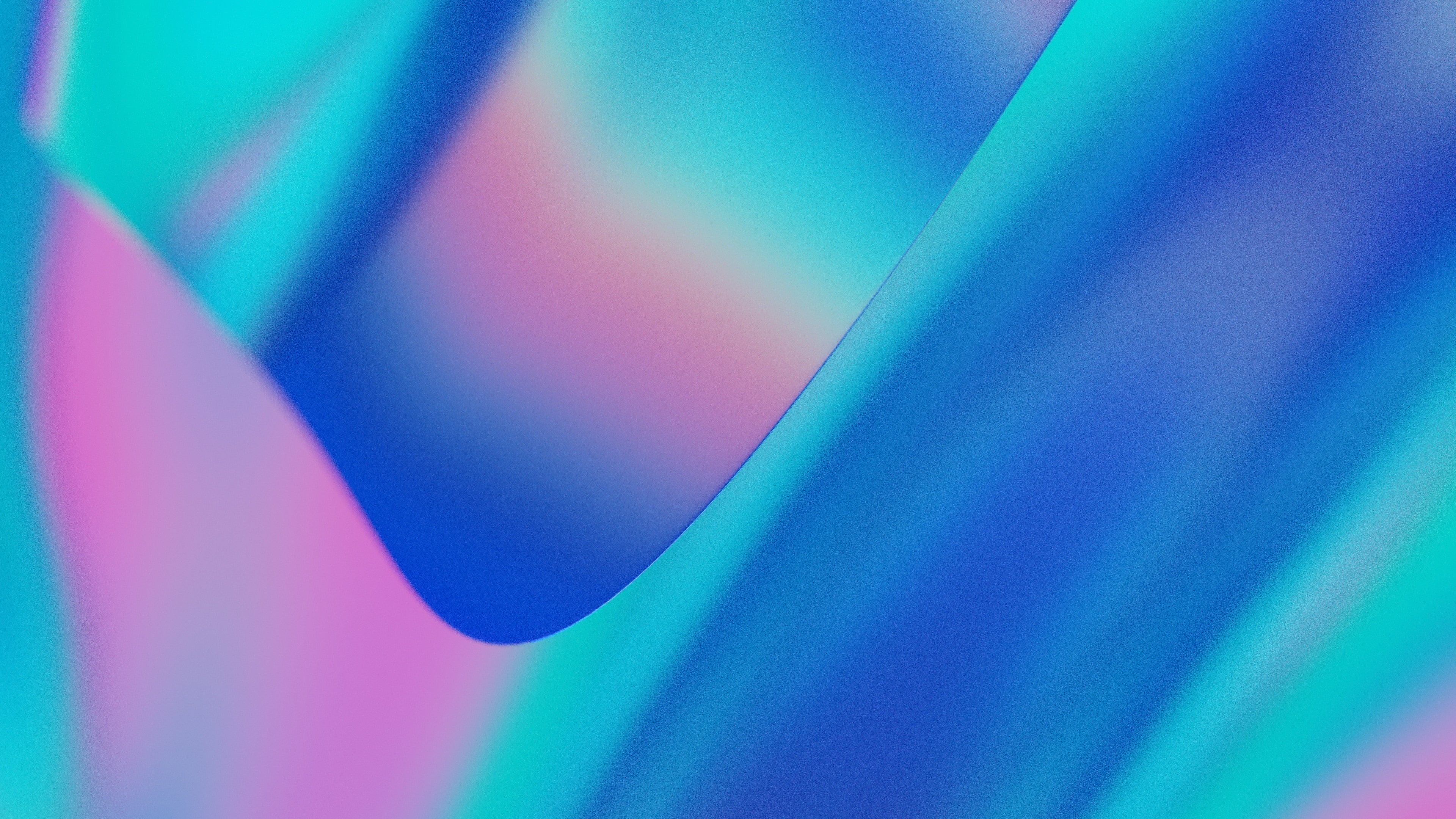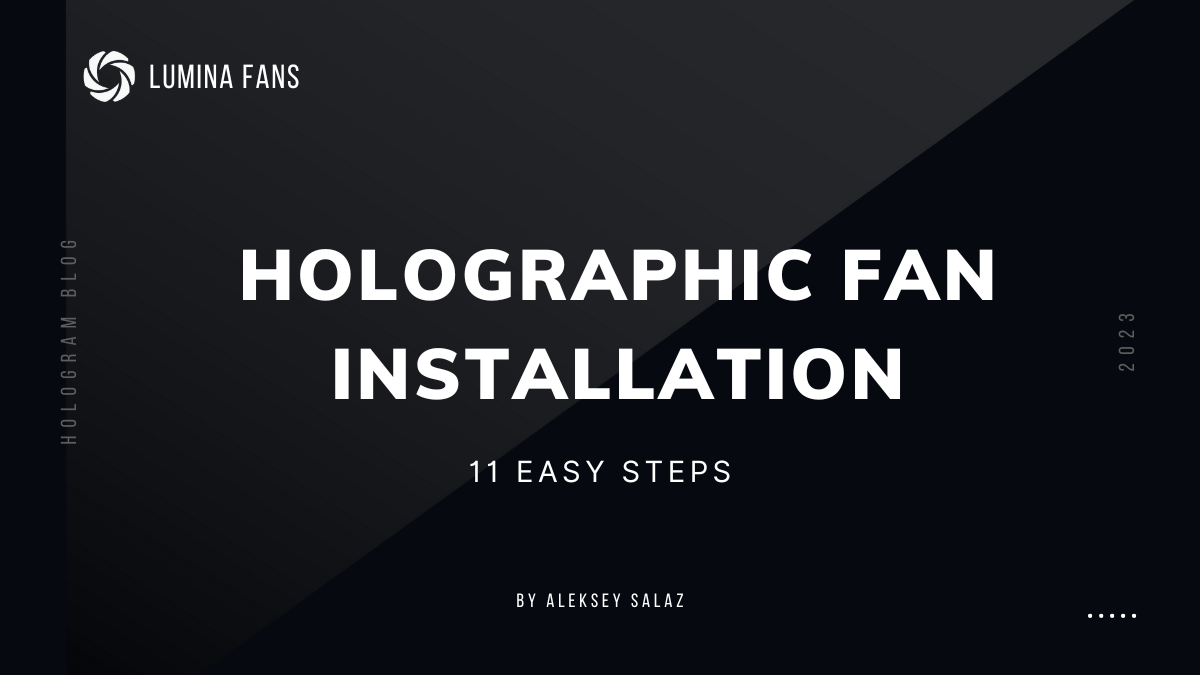Holographic advertising is not just a sci-fi concept anymore; it has become a reality that is changing the way brands communicate with their customers.
It works by using light diffraction to create a virtual 3D image of an object or person.
The result is a lifelike representation that appears to float in mid-air, creating a mesmerizing spectacle that is hard to ignore.
Click here to see the best 3D holographic fans
How Hologram Advertising Works
Holographic advertising is a complex process that involves a blend of technology, creativity, and strategic planning.
It starts with the creation of a 3D model using computer software. These models can be of products, logos, or even people.

Once the model is created, it's then transformed into a holographic image using a special type of projector.
How Lasers Play Into the Mix
The projector creates the hologram by illuminating the 3D model with a laser light.
This light is split into two beams: one that shines directly on the projection surface, and another that bounces off the 3D model and onto the surface.
When these two beams meet, they create an interference pattern, which the human eye perceives as a three-dimensional image.
The Final Product
Though the technical aspect of creating a hologram may seem complex, the result is an incredibly lifelike image that appears to be floating in space.
This captivating visual effect is what makes holographic advertising so effective. It grabs attention, stirs curiosity, and encourages viewers to engage with the advertisement in a way that traditional marketing methods often fail to do.
The Pros of Hologram Advertising
The benefits of hologram advertising extend beyond its visual appeal.
One of its primary advantages is its ability to create a strong and lasting impression on viewers.
Studies have shown that people remember images and experiences much better than words or flat visuals.
Involving the Customer
Holographic advertising offers an unparalleled level of interactivity.
Consumers are not just passive viewers; they can interact with the holographic displays, adding a new dimension to the advertising experience. '

This interactivity can lead to increased engagement, deeper emotional connections, and ultimately, higher conversion rates.
A Universal Marketing Strategy
Another advantage of holographic advertising is its versatility. It can be used in a wide variety of settings and applications, from retail stores and trade shows to outdoor events and digital billboards.
Brands can use it to showcase their products in a unique and exciting way, create immersive in-store experiences, or capture attention in crowded public spaces.
The Cons of Hologram Advertising
Despite its many advantages, hologram advertising does come with some challenges and considerations.
Price
One of the biggest challenges is the cost. Creating a holographic advertisement, especially one that is large and complex, can be expensive.
Businesses need to consider the cost of the equipment, the design and creation of the 3D models, and the ongoing maintenance of the technology.
Technical Knowledge
Another challenge is the technical expertise required.
Holographic advertising involves complex technology and requires a certain level of technical knowledge to implement and manage effectively.
This may necessitate hiring or training staff, which can add to the overall cost.
Execution
Lastly, there may be logistical considerations, such as finding a suitable location for the holographic display and ensuring that it is installed correctly and safely.
Depending on the size and complexity of the display, this may require advanced planning and coordination.
Case Studies of Successful Hologram Campaigns
The potential of holographic advertising can be best understood by examining real-world examples where it has been successfully implemented.
Nike
One such example is the campaign launched by Nike for the release of their HyperVenom Phantom II shoes.
They used a holographic display in a shopping mall, which showcased a 3D hologram of footballer Neymar Jr. demonstrating the shoe's features.
This campaign was highly successful, attracting large crowds and increasing sales.
Pepsi
Another notable example is the campaign run by Pepsi Max in London.
They turned a bus shelter into a holographic display, showing a variety of scary and humorous scenarios, such as a giant robot invasion or a loose tiger on the street.

The campaign went viral, garnering millions of views on social media and significantly boosting Pepsi's brand visibility.
These examples demonstrate the power and potential of holographic advertising. By creating unforgettable experiences, these brands were able to captivate their audience, generate buzz, and ultimately drive sales.
Incorporating Hologram Advertising into Your Marketing Strategy
Incorporating holographic advertising into your marketing strategy requires careful planning and consideration.
What Are Your Goals?
Start by identifying the goals you want to achieve with your campaign.
Do you want to increase brand awareness, drive sales, or launch a new product?
Your objectives will guide the design and implementation of your holographic advertisement.
Audience
Next, consider your target audience.
- What kind of experience would appeal to them?
- What would capture their attention and interest?
Understanding your audience can help you create a holographic advertisement that resonates with them and encourages engagement.
Logistics
Finally, consider the logistics.
- Where will your holographic advertisement be displayed?
- What kind of equipment will you need?
- How will you maintain and troubleshoot the technology?
These are all important considerations that can impact the success of your holographic advertising campaign.
Choosing the Right Technology
Choosing the right holographic advertising technology is crucial to the success of your campaign.
There are several options available, each with its own strengths and limitations.
Holographic Display Case
For instance, you could opt for a holographic display case, which is ideal for showcasing products in a retail setting.

These cases use a combination of projection and reflection to create a 3D image inside a glass box.
Holographic Projector
Alternatively, you could use a holographic projection screen, which is suitable for larger displays or events.

These screens use a special type of film that reflects the projected image, creating a lifelike 3D effect.
3D Holographic Fan
Another option is a holographic fan display, which uses LED lights and rapidly spinning blades to create a 3D image that appears to float in mid-air.

These are particularly effective for capturing attention in busy environments.
Conclusion
Holographic advertising represents an exciting frontier in the world of marketing.
With its ability to create stunning, immersive experiences, this technology has the potential to revolutionize the way businesses communicate with their customers.
Despite the challenges and considerations, the benefits of holographic advertising – from increased engagement and brand recall to greater flexibility and versatility – make it a worthy investment for businesses looking to stand out in the competitive marketplace.
Frequently Asked Questions
What is holographic advertising?
Holographic advertising employs three-dimensional (3D) holographic images to display products or messages, offering a more interactive and engaging viewer experience compared to traditional advertising mediums.
What are the advantages of holographic advertising?
Holographic advertising captivates audiences with 3D visuals, making advertisements more engaging and memorable. It requires less physical space and allows real-time customization of content, making it a flexible advertising option.
How are holograms used in marketing?
Holograms are used to showcase products in 3D, create interactive displays, enhance brand presentations at trade shows and events, and provide a futuristic image for brands, aiding in modern marketing strategies.
What are the benefits of holographic display?
Holographic displays are eye-catching, interactive, and potentially cost-effective over time as they require fewer materials and can be updated digitally compared to traditional advertising materials.
What are the disadvantages of a hologram?
The disadvantages include high upfront costs, technical challenges in setup and maintenance, and potentially limited viewing angles and clarity depending on the technology used.
What are the disadvantages of holographic advertising?
Holographic advertising may face accessibility issues as not all consumers are familiar with the technology. Creating effective holographic content can be challenging and time-consuming, and there may be limitations in resolution, viewing angles, and interactivity.
What are the benefits of hologram in business?
Holograms offer realistic product visualizations, provide a platform for realistic training simulations, and enhance customer engagement, which can lead to increased customer retention and sales.
What is the best use of hologram?
The best use of holograms is in areas where 3D visualization significantly enhances user experience such as product showcases, education, training simulations, and interactive marketing campaigns.
Can the audience see the holograms?
Yes, audiences can see holograms without the need for special glasses or equipment, making it an accessible and immersive advertising medium.
Featured Image Credit: Eleni Afiontzi on Unsplash


